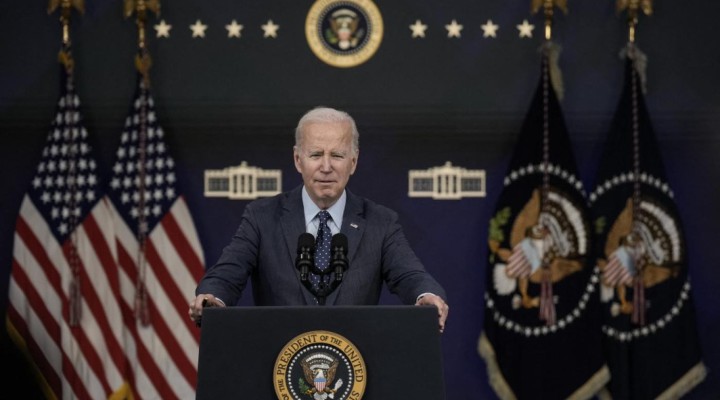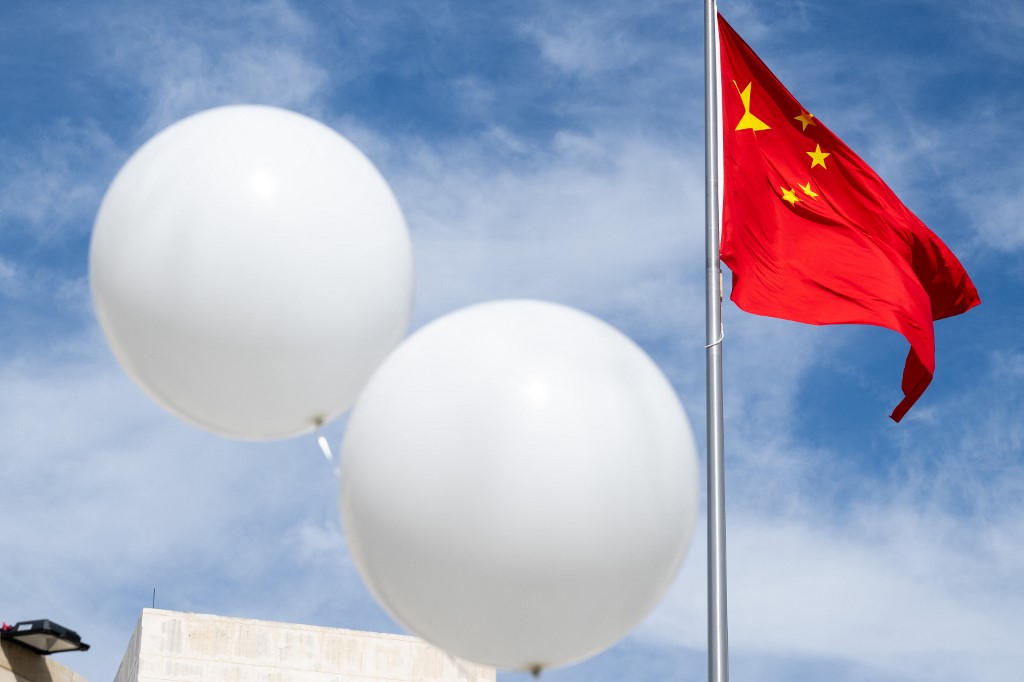US-China: The balloon saga has been neither side’s finest hour

Washington says China violated US sovereignty. Beijing claims the US behaved hysterically. With tensions so high, both need to conduct themselves more soberly and professionally
I recently pointed out that the political establishments in Washington and Beijing were afraid of being perceived by the other as soft.
The case of the Chinese balloon detected overflying US air space on 28 January, and later shot down by the US Air Force, has incontrovertibly confirmed such an assessment. Since then, unidentified flying objects have been curiously mushrooming over North American skies.
Washington denounced the episode as a Chinese violation of international law and of US sovereignty; it even cancelled Secretary of State Antony Blinken’s scheduled visit to Beijing a few days later. Beijing angrily denounced the shooting down as an “absurd and hysterical” overreaction, and also rejected a formal request from the US defence secretary to speak with his Chinese counterpart.
Unsurprisingly, China, too, accused the US of flying high-altitude balloons over its airspace more than 10 times during 2022.
Blinken’s visit to Beijing had been agreed upon as a follow-up to President Joe Biden and President Xi Jinping’s recent bilateral meeting at Bali’s G20 Summit last November. It was supposed to be an attempt to put back on track a bilateral relationship that is going from bad to worse.
The cancellation was unfortunate. The US secretary of state had unusually also been granted a meeting with Xi; a move that potentially implied high expectations from Beijing over the visit’s outcome.
China’s bombshell
Luckily, on the side of the Munich Security Conference held last week, the two top diplomats of the US and China, Blinken and State Councillor Wang Yi, were able to hold a bilateral meeting. It is worth noting that, according to Chinese sources, the meeting took place at the request of the US.
Their respective public stances were not heartening at all. The hope is that at least behind closed doors, some better understanding between the two sides was crafted.
Wang offered a placid, albeit paternalistic, lecture on multilateralism and international law to the western audience in the Bavarian city by exhorting them “to eschew the subconscious belief in the superiority of its civilisation and abandon its prejudices and anxieties regarding China”.
He emphasised that: “In multilateral affairs, major countries play a key role and shoulder significant responsibilities… they need to behave in a way that befits their status… instead of provoking confrontation, they should work together to maintain world peace and stability.”
Then he dropped his bombshell: “China will further strengthen strategic coordination with Russia… we will advance our comprehensive strategic partnership of coordination for a new era on all fronts, and instil more positive energy into global security, stability and strategic balance.”
It should not come as a surprise, then, that Wang’s announcement of a forthcoming Chinese peace plan over Ukraine was met with western scepticism.
For his part, Blinken warned that any Chinese material support to Russia’s military would have “serious consequences” on US-China relations.
Better staying silent
It is difficult to ascertain if the Chinese balloon was really on a meteorological mission and went off course for technical reasons, as claimed by China, or whether it was collecting intelligence, as claimed by the US.
As China owns numerous satellites with which it can surveil US military infrastructure, it is legitimate to ask why it should use balloons. There is also no way of independently verifying Chinese claims that US balloons were flying over its skies last year.
As to the mutual accusations of violation of international law and respective sovereignties, both countries would do better staying silent.
China’s assertive military moves in the South China Sea and the Taiwan Straits, and the decade-long unauthorised US military presence in Syria, its drones flying all over the world frequently carrying out extra-judicial killings, barely qualify as actions coherent with international law and with respect for other countries’ sovereignty.
The truth is that espionage has been used ever since the human race contemplated war as a tool to solve disputes. Intelligence gathering has therefore been ongoing for thousands of years.
Today’s advanced and globally extended intelligence-collecting system is the so-called Five Eyes network, an Anglosphere agreement which includes the US, the UK, Canada, Australia and New Zealand. It is based on an array of satellites and eavesdropping stations which cover all communications exchanged on the planet, including those of their closest allies.
Neither Russia nor China can boast of a similar system, although both are constantly increasing their capabilities.
Double standards
Yet even intelligence collection does not escape the double standards that sometimes characterise western democracies’ positions. When they carry it out, it is considered legitimate and a crucial tool to prevent terrorism or to survey potential hostile initiatives by so-called rogue states and autocracies.
When it is undertaken by states which are not aligned with western policies (including the rogues and the autocracies), it is categorised as a hostile act and as unjustified interference in the internal affairs of a sovereign country.
Regrettably, the attempt to spare US-China relations from a dangerous zero-sum game logic is being compromised by mutual recriminations concerning practices where some unwritten rules should be mutually, and tacitly, tolerated.
Among the Cold War’s main inheritances was a mutually recognised acceptance that the US and Soviet Union were “authorised” to survey the military activity of the other; it was the mutually assured destruction (MAD) logic upon which the nuclear balance was kept for decades.
It was according to such logic that in the 1980s and 1990s the US agreed, first with the Soviet Union, and then with the Russian Federation, the so-called Treaty on Open Skies to reciprocally verify the compliance of some nuclear weapons reduction agreements that the two superpowers had signed.
Such agreements, as with many others, have been essential to avoid potential miscalculations that could trigger dangerous escalations towards a possible nuclear holocaust.
Considering how crucial the US-China relationship is becoming for global balance, arrangements like Open Skies would appear more and more necessary.
Geopolitical cornerstone
The impression is that the US overreacted to a certain extent to the Chinese balloon, shooting down three other unidentified objects over US and Canadian territory over three days.
It brought back memories of the famous episode of the Soviet Red Army brigade detected in Cuba in 1979. For weeks, the US political establishment and media raised the alarm regarding the possible security implications of such a tiny Soviet military presence on the Caribbean Island. Finally, the security threat claim was ridiculed with the observation that, at best, if the Soviet brigade had entered US territory, it would probably have gotten stuck in Miami traffic.
The Chinese balloon affair has been greeted with similar humorous reactions almost everywhere. The Chinese government also exaggerated when it called the US reaction to the balloon hysterical.
However, the fact remains that the US Air Force has shot down at least three other objects without, apparently, knowing their provenance and ownership; with all due respect to the American taxpayers, who finance the largest military budget in the world.
US-China relations will be the geopolitical cornerstone of the 21st century. Both countries should try to avoid reciprocal provocations and, above all, conduct themselves more soberly and professionally.
https://www.middleeasteye.net/opinion/us-china-balloon-saga-not-finest-hour
 TheAltWorld
TheAltWorld 

0 thoughts on “US-China: The balloon saga has been neither side’s finest hour”